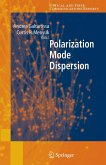The strong investments into optical telecommunications in the late 1990s resulted in a wealth of new research, techniques, component designs, and understanding of polarization effects in fiber. Polarization Optics in Telecommunications brings together recent advances in the field to create a standard, practical reference for component designers and optical fiber communication engineers. Beginning with a sound foundation in electromagnetism, the author offers a dissertation of the spin-vector formalism of polarization and the interaction of light with media. Applications discussed include optical isolators, optical circulators, fiber collimators, and a variety of applied waveplate and prism combinations. Also included in an extended discussion of polarization-mode dispersion (PMD) and polarization-dependent loss (PDL), their representation, behavior, statistical properties, and measurement. This book draws extensively from the technical and patent literature and is an up-to-date reference for researchers and component designers in industry and academia.
I have written this book to fill a void between theory and practice, a void that I perceived while conducting my own research and development of components and instruments over the last years. In the chapters that follow I have pulled materials from the technical and patent literature that are relevant to the understanding and practice of polarization optics in telecommunications, material that is often known by the respective experts in industry and academia but is rarely if ever found in one place. By bringing this material into one monograph, and by applying a single formal ism throughout, I hope to create a "base level" upon which future research and development can grow. Polarization optics in telecommunications is an ever evolving? eld. Each year significant advancements are made, punctuated by important discoveries. The references upon which this book is based are only a snapshot in time. Areas that remain unresolved at the time of publication may very well clarified in the years to come. Moreover, the focus of the field changes in time: for instance, there have been few passive nonreciprocal component advancements reported in the last few years, but PMD and PDL advancement continues with only modest abatement.
Hinweis: Dieser Artikel kann nur an eine deutsche Lieferadresse ausgeliefert werden.
I have written this book to fill a void between theory and practice, a void that I perceived while conducting my own research and development of components and instruments over the last years. In the chapters that follow I have pulled materials from the technical and patent literature that are relevant to the understanding and practice of polarization optics in telecommunications, material that is often known by the respective experts in industry and academia but is rarely if ever found in one place. By bringing this material into one monograph, and by applying a single formal ism throughout, I hope to create a "base level" upon which future research and development can grow. Polarization optics in telecommunications is an ever evolving? eld. Each year significant advancements are made, punctuated by important discoveries. The references upon which this book is based are only a snapshot in time. Areas that remain unresolved at the time of publication may very well clarified in the years to come. Moreover, the focus of the field changes in time: for instance, there have been few passive nonreciprocal component advancements reported in the last few years, but PMD and PDL advancement continues with only modest abatement.
Hinweis: Dieser Artikel kann nur an eine deutsche Lieferadresse ausgeliefert werden.








